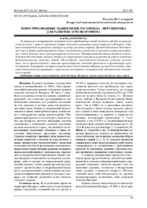| dc.contributor.author | Киселева, М. С. | |
| dc.coverage.spatial | Белгород | ru |
| dc.date.accessioned | 2024-05-22T07:51:00Z | |
| dc.date.available | 2024-05-22T07:51:00Z | |
| dc.date.issued | 2018 | |
| dc.identifier.citation | Киселева, М. С. Невостребованные здания нежилого фонда - перспектива для развития агроэкотуризма = The unclaimed buildings uninhabited fund – perspectives for development of rural tourism / М. С. Киселева // Вестник Белгородского государственного технологического университета им. В. Г. Шухова. – 2018. – № 5. – С. 45-50. | ru |
| dc.identifier.uri | https://rep.bntu.by/handle/data/143207 | |
| dc.description.abstract | В статье рассматривается потенциал невостребованных зданий нежилого фонда на примере сельских школ, с целью сохранения данных объектов и развития агроэкотуризма в Беларуси. Статья основывается на реальных примерах в разных регионах страны. Проводится анализ действующих норм и правил проектирования жилых малоэтажных домов для их применения при реконструкции зданий сельских школ под агротуристические цели. Подтверждается диалектическое взаимодействие действующих законов, указов и государственных программ развития на модели изменения функциональности нежилых зданий. Многообразие композиционно-объемных решений сельских школ, после приспособления к задачам агроэкотуризма, является феноменом в архитектуре агроэкотуризма. Сохранение построек сельских школ будет способствовать улучшению местных социально-экономических факторов и укреплению культурной и исторической идентичности белорусского народа. | ru |
| dc.language.iso | ru | ru |
| dc.publisher | Белгородский государственный технологический университет им. В. Г. Шухова | ru |
| dc.title | Невостребованные здания нежилого фонда - перспектива для развития агроэкотуризма | ru |
| dc.title.alternative | The unclaimed buildings uninhabited fund – perspectives for development of rural tourism | ru |
| dc.type | Article | ru |
| local.description.annotation | The article discusses the potential of non-residential buildings for example, rural schools, in order to maintain these facilities, rural tourism development in different regions of Belarus. The article is based on real examples in different regions of the country. The analysis of existing norms and rules for the design of low-rise residential buildings for the purpose of their application in the reconstruction of buildings in rural schools for agroecotourism purposes is being carried out. The dialectical interaction of existing laws, decrees and state development programs on the model of adaptation of non-residential buildings to rural tourism is confirmed. The variety of composition-voluminous solutions of rural schools, after adapting to the functions of agroecotourism, is a phenomenon in the architecture of agroecotourism. Preservation of rural schools will improve local socio-economic factors and strengthen the cultural and historical identity of the Belarusian people. | ru |

